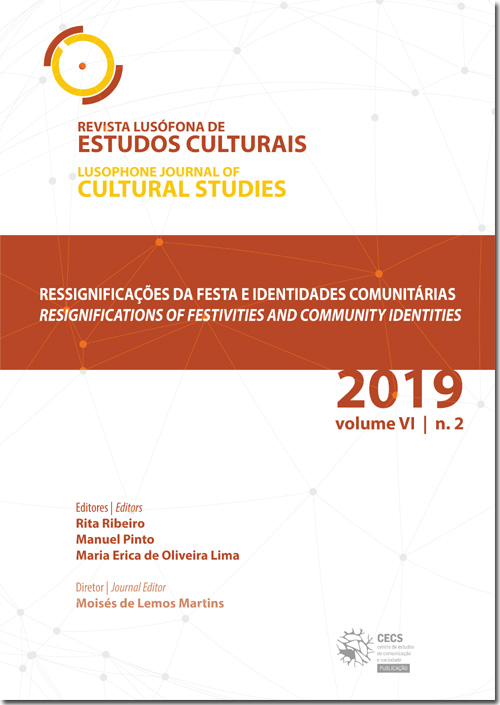Cultural policy as a governmental field: entrepreneur artists
DOI:
https://doi.org/10.21814/rlec.2115Keywords:
governmentality, entrepreneurship, art, culture, cultural policyAbstract
This article presents some aspects of the work of the British researcher Tony Bennett (1988, 1998, 2008, 2011) about cultural policy and artistic field. The author adopts Foucault's (2016) concept on governmentality and suggests the encounter between post-Kantian aesthetics and liberal thought at the end of the eighteenth century allowed for the arts and cultures to be understood as a governmental field. This trend can be seen in the development of cultural policies, particularly those starting from the middle of the twentieth century, and, more recently, in the spread of the concept of creative economy. We further elaborate on Foucault's thought, especially on entrepreneurship and human capital. The hypothesis is that one of the factors that transforms art circuits into a matter of concern in contemporary society is the manner how artists invest their own life into artistic production. Interest groups are multiplied and struggle for better work conditions and public policies. On the other hand, networks run the risk of limiting themselves to their own circuits, thus fragmenting the cultural field. The challenge is to turn art and culture into a common good, which is part of the population’s daily life.
Downloads
References
Bennett, T. (1988). The exhibitionary complex. New formations, 4, 73-101.
Bennett, T. (1998). Culture. A reformer’s science. Londres: Sage.
Bennett, T. (2008). Aesthetics, government, freedom. Key Words: A Journal of cultural materialism, 6, 76-91. Retrieved from https://raymondwilliamssociety.files.wordpress.com/2017/10/key-words-6.pdf
Bennett, T. (2011). Guided freedom: aesthetics, tutelage, and the interpretation of art. Tate papers, 15. Retrieved from https://www.tate.org.uk/resear-ch/publications/tate-papers/15/guided-freedom-aesthetics-tutelage-and-the-interpretation-of-art
Bocchini, B. (2017, May 4). Ministério estima que cultura é responsável por 4% do PIB. EBC. Agência Brasil. Retrieved from http://agenciabrasil.ebc.com.br/cultura/noticia/2017-04/ministerio-estima-que-cultura-e-responsavel-por-4-do-pib
Bourdieu, P. (1998). Les règles de l’art. Genèse et structure du champ litteraire. Lonrai: Éditions du Seuil.
Costa, R. (2014). A biopolítica nos estudos sobre pessoas com deficiência. Diálogo (bio)político: sobre alguns desafios da construção da Rede de Cuidados à Saúde da Pessoa com Deficiência do SUS. Brasília: Ministério da Saúde.
Dubuffet, J. (2012). Asfixiante Cultura. In G. Gentil, P. Poirrier & T. Coelho (Eds.), Cultura e Estado: a política cultural na França, 1955-2005 (pp. 69-71). São Paulo: Iluminuras.
Foucault, M. (2008). Nascimento da biopolítica: curso dado no Collège de France (1978-1979). São Paulo: Martins Fontes.
Foucault, M. (2013). O governo de si e dos outros. São Paulo: Martins Fontes.
Foucault, M. (2016). Microfísica do poder. São Paulo: Paz e Terra.
Furtado, C. (2012). Discurso de posse. In Furtado, C. (Ed.), Ensaios sobre cultura e o Ministério da Cultura. Rio de Janeiro: Contraponto.
Hall, S. (1980). Cultural studies: two paradigms. Media Culture Society, 2(1), 57-72. https://doi.org/10.1177/016344378000200106
Hesmondhalgh, D. (2013). The Cultural Industries. Londres: Sage.
Lei nº 8.313/1991, December 23, República Federativa do Brasil.
Lei 13.278/2002, January 8, Prefeitura do Município de São Paulo, República Federativa do Brasil.
Lei 13.540/2003, March 24, Prefeitura do Município de São Paulo, República Federativa do Brasil.
Lei 14.071/2005, October 18, Prefeitura do Município de São Paulo, República Federativa do Brasil.
Lei nº 16.496/2016, July 20, Prefeitura do Município de São Paulo, República Federativa do Brasil.
Matos, T. (2019, August 12). Museus em alta: 1º semestre de 2019 tem recordes de público pelo Brasil. G1. Retrieved from https://g1.globo.com/pop-arte/noticia/2019/08/12/museus-em-alta-1o-semestre-de-2019-tem-recordes-de-publico-pelo-brasil.ghtml
Osborne, T. (1998). Aspects of Enlightenment. Social theory and the ethics of truth. Oxford: Rowman & Littlefield. Retrieved from https://www.kobo.com/us/en/ebook/aspects-of-enlightenment-2
Osborne, T. (2003). Against ‘creativity’: a philistine rant. Economy and society, 32(4), 507-525. https://doi.org/10.1080/0308514032000141684
Pelbart, P. (2013). Foucault versus Agamben? Revista Ecopolítica, 5, 50-64.
Poirrier, P. (2012). Introdução. In G. Gentil, P. Poirrier & T. Coelho (Eds.), Cultura e Estado: a política cultural na França, 1955-2005 (pp. 17-39). São Paulo: Iluminuras.
Schumpeter, J. (1947). The creative response in economic history. The Journal of Economic History, 7(2), 149-159.
Shiner, L. (2001). The invention of art: a cultural history. Chicago: University of Chicago Press.
Unesco (1970, 24 de agosto a 2 de setembro). Conferencia Intergubernamental sobre los Aspectos Institucionales, Administrativos y Financieros de las Políticas Culturales. Retrieved from http://unesdoc.unesco.org
Unesco (2005). Convenção sobre a Proteção e Promoção da Diversidade das Expressões Culturais. Retrieved from https://unesdoc.unesco.org/ark:/48223/pf0000149742
Williams, R. (1967). Culture and Society. Londres: Chatto & Windus. Retrieved from https://www.kobo.com/br/pt/ebook/culture-and-society
Downloads
Published
How to Cite
Issue
Section
License
Authors own the copyright, providing the journal with the right of first publication. The work is licensed under a Creative Commons - Atribuição 4.0 Internacional License.












